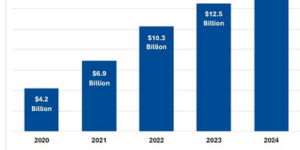Reinsurers were able to complete the April renewals smoothly, despite being forced to move to the new working-from-home model after the COVID-19 outbreak, according to Willis Re.
“The global reinsurance market has shown immediate resilience to operating under the challenge of the disruption by smoothly moving to a new working model with underwriters and brokers working from home yet still able to complete and process renewals in a timely fashion, providing unbroken service to their clients,” said the broker in its latest 1st View report, titled “Market unity and discipline: managing initial COVID-19 challenges.”
Addressing the question of rates, Willis Re said, reinsurers took a “measured” approach, which means that loss-affected accounts saw significant rate increases, while loss-free business saw more modest rises.
The largest risk-adjusted property price increases were seen on loss-hit catastrophe treaty contracts, which were up 30% to 50% for Japanese wind exposures, said Willis Re.
Loss-free treaties saw less dramatic rises and, in a handful of cases, renewed as expiring, the report said.
Further, Willis Re added, capacity provided through insurance-linked securities (ILS) decreased slightly, with occasional examples of funds reducing their April 1 offer due to recent investor redemptions.
“Following the gradual hardening over the past 12 months, reinsurers approached the April 1 renewal season, looking to build on the rating increase momentum, which up to this point had continued to be outpaced by the primary market,” said the report.
“With the capital strength of the traditional reinsurance industry showing a significant increase as a result of improved 2019 results and only modest reductions in insurance-linked securities (ILS) capacity, primary insurance company buyers were confident that enough capacity would be available to meet their needs, even for those looking to buy more limit, subject to acceptable terms and conditions for both parties.”
COVID-19 Impact
Reinsurers’ COVID-19 response was affected by timing and underlying coverage considerations, added the report. Most buyers started their renewal negotiations well in advance. This “proved to be prescient in light of the COVID-19 outbreak, which started to challenge the operational model of the market in the last two weeks of March.”
For example, April 1 programs which firm-ordered in good time were fully placed well in advance of the due date and were completed without any COVID-19-specific exclusionary language, the report said.
For those programs that were not completed well in advance, several reinsurers sought to impose COVID-19 exclusions, which were achieved in some cases. In other cases, buyers were able “to provide comfort that their original polices have no exposure to COVID-19-related losses by issuing letters of understanding to reinsurers,” Willis Re affirmed.
“The extreme gyrations of financial markets have had a significant impact on the assets of reinsurance companies, but, fortunately, the timing of the COVID-19 disruption has coincided with the global reinsurance market being in a very strong financial position supported by strict regulation,” the report continued.
Stand-Alone Cyber
Another finding in the report pointed to the growth of stand-alone cyber (to combat “silent cyber, which is the unknown cyber exposure in a portfolio that has not been explicitly excluded).
During the April renewals, Willis Re noted that cyber reinsurance saw the following trends:
- Increased application of cyber exclusions in other lines, which was fueled by premium growth in stand-alone cyber.
- The Lloyd’s market sought to underwrite cyber exposure before deciding whether to apply exclusions in other lines of business.
- Tightening reinsurance capacity, particularly for aggregate stop loss, led to a hardening in pricing conditions.
“All of the above occurred before the impact of COVID-19 and how reinsurers may view exposure to systemic risk going forward,” said the report.
(Editor’s note: The April renewals are focused on business in the Asia-Pacific region, although some U.S. reinsurance business is also handled during the season, including nationwide property. Over half of global reinsurance renewals take place in January).
*This story ran previously in our sister publication Insurance Journal.





















 Revisiting California’s Wildfires: A Personal Journey
Revisiting California’s Wildfires: A Personal Journey  Is State Farm General Too Big to Fail? Calif. Rate Hearing Concludes
Is State Farm General Too Big to Fail? Calif. Rate Hearing Concludes  No Escape From Tariffs — Not Even for D&O Liability Insurers
No Escape From Tariffs — Not Even for D&O Liability Insurers  Roof Repair and Replacement Costs Up Nearly 30% Since 2022: Verisk
Roof Repair and Replacement Costs Up Nearly 30% Since 2022: Verisk 






